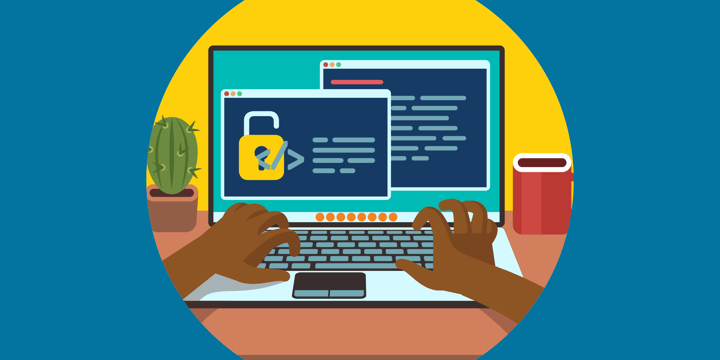The Case Foundation has always been passionate about finding ways to democratize technology. From when Jean and Steve Case founded the organization over 20 years ago to today, we've strived to close digital divides.
We work to break down the barriers so all can learn the computer skills and access the information they need to compete and succeed. We see similar opportunities to share knowledge and lower the barrier of entry for technology through promoting the use of open source. We see great promise for nonprofits to embrace open source.
Open-source software allows anyone to read, study, modify, and redistribute a piece of software's source code with little restriction other than that free access is maintained. (The software's source code is the foundation of any given computer program.) It is often developed in a highly collaborative manner, with many people contributing pieces of code.
This type of software has an enormous potential to accelerate a nonprofit's impact. A nonprofit can save time and money all while getting access to the same cutting-edge technology that leading companies and innovators use in the private sector.
As a concept, open source dates back almost as far as software itself. It rose to prominence in the late 1990s with the growth of the Internet. Companies such as Apple and Google recognized that open source is a key tool for innovation.
Open-source projects often start with humble roots when one person or a small group "open sources" an idea to to the public. Then a community of users and contributors grows around the project over a period of years — sometimes comprising the efforts of hundreds or thousands of people. For nonprofits, the community aspect of an open-source project is an opportunity for organizations and individuals sharing common interests to collaborate on innovative technologies.
What follows is some information about how to get more involved in the open-source community. You can also follow the link below to take a survey that will help us get a better idea of how nonprofits are currently using this technology.
Open Source: A Familiar Type of Software

It's likely that you're using open-source software. For instance, WordPress and Drupal, leading content management systems in use by many nonprofits, are open-source projects. There is no licensing fee to use either platform, and you are free to customize your site's code however you'd like without violating any licensing restrictions or terms of use.
In this way, open-source technology may already be saving you considerable time and money, with fewer headaches. The alternative is using paid commercial platforms to host and build your website. And many of these restrict the allowable level of customization. Plus, sometimes they carry heavy ongoing licensing fees.
Getting Involved in Open Source
Using open-source software can greatly benefit your organization, but there is also value in returning the favor.
By contributing open-source code, your organization can make a perpetual, digital philanthropic gift to the world. Many organizations facing the same challenges can benefit from the contribution of just one open-source project and therefore better pursue their own changemaking mission.
A community of givers and receivers of open-source philanthropy has the power to accelerate everyone's work. Let's take a look at how to get more involved with the open-source community.
Research
When tackling your next technology project, consider how the problem you're trying to solve might either be
- Already solved in part or whole by the open-source ecosystem or
- A problem that others are also trying to solve
To answer these questions, it takes some research and outreach. If you're working with a tech vendor or partner, engage with them. Seek to understand if this a problem they see often or if they've solved similar or adjacent problems using some kind of open-source solution.
If you can identify some solution in the open-source community that solves part or all of your problem, you must vet the project. Take a look at the project's page for a few key details:
- How long has it been since the project was updated? Platforms like GitHub show when the project was last changed or when the last version was released. If it's been within the past few months, that's an active project. If it's been on the scale of years, it could be an abandoned or outdated project.
- Is there an active community? Find the "bugs" or "issues" section of the project and see if there are users logging in and solving bugs. The appearance of many bugs doesn't necessarily mean the project is not of a high quality as long as the issues are filed by many people. Active communities will often consist of many passionate users seeking to maintain and improve the project.
If you can satisfactorily answer those questions, you may have found an open-source project that will help solve your challenge.
Contribute Your Own Open-Source Projects
Perhaps you'll determine that your challenge is unique or you need to heavily expand on an existing open-source solution. If so, next ask yourself if this challenge seems common enough that it warrants sharing your solution to the open-source community.
To determine this, engage with peers in your sector or across similar landscapes to determine how the solution you're exploring could support their work as well. This part may involve taking a step back from your own mission and seeing what may be abstracted to become a more generalized solution.
Once you have a concept for a project that will serve your needs and likely serve the needs of others, engage with your tech team or vendor. Work with them to build a project that is coded in a modern language and well-documented so that others may easily use your open-source code.
Plus, ensure it's licensed so that others may understand what rights they have when using and modifying your code. For more on this step, visit GitHub's guide to starting an open-source project.
The Case Foundation's Contribution to Open Source
The Case Foundation is committed to the open-source community. Our staff contributes much of the technology we create to open source and makes it available for all to use via GitHub. Here are four projects we've open sourced that are free for any nonprofit to use. If you think any one of these projects is a good fit for your organization, let us know! We're also conducting a survey on how nonprofits currently engage with open source, and we would welcome your feedback.
Analytics Dashboard
Data-informed decision making within an organization is only as good as the organization's understanding of that information. Faced with that challenge, the team responsible for digital analytics and reporting at the Case Foundation set out to construct a dashboard. We're also conducting a survey on how nonprofits currently engage with open source, and we would welcome your feedback.
The dashboard directly communicates key online data to the entire organization in an efficient and easy-to-use experience. It leverages multiple, more complex analytics services to provide one clear picture of the Case Foundation's digital performance on multiple websites it runs.
Weekly Roundup
Not too long ago, our communications team and interns would painstakingly compile a newsletter of all the news and media we were tracking on our movements and programs each week. This effort required the tedious task of perfectly formatting several dozen titles, links, and descriptions and then blasting out an Outlook email to our team and other stakeholders. This newsletter was incredibly valuable to our work, but it required a lot of staff hours.
To address this issue, we created the Weekly Roundup, a news clipping and emailing tool.
It scrapes metadata (title, date, publication, and description) from submitted URLs, then formats the information into a newsletter that users may organize and edit before sending. The system distributes the newsletter via SendGrid. This tool whittles a process that lasted several hours down to mere minutes, freeing up our staff time for newer and more exciting projects.
Review-O-Matic
In 2017, we launched a site called Finding Fearless as part of our Be Fearless campaign to find stories that inspire us to be bold, take risks, and tackle the world's biggest problems. Visitors would come to the site to submit their story of fearlessness to appear on our story wall, along with the experiences of others.
Behind the scenes, we also had a team of individuals combing through each story to elevate those stories that we felt particularly resonated with our Be Fearless principles. The team also flagged stories that contained inappropriate language or content. The tool we built to facilitate this process is called the Review-O-Matic.
The Review-O-Matic handles the job of collecting and vetting user-submitted content. The system collects submissions via direct input or via an import from another service such as Wufoo.
Once in the Review-O-Matic, the newly submitted content goes to a user for review. A "reviewer" grades and categorizes the content based on customizable prompts, and administrators can then explore the reviewed (and unreviewed) stories as part of a final vetting process.
Faces of Founders: User-Generated Content
In 2016, we launched our #FacesofFounders campaign. The effort was a centerpiece of the Foundation's inclusive entrepreneurship movement. It invited entrepreneurs — particularly women founders and entrepreneurs of color — to share their photos and stories of entrepreneurship on FacesofFounders.org or on Twitter using #FacesofFounders.
Recognizing the value of the platform behind #FacesofFounders, the Case Foundation has open sourced the WordPress theme that powered the site when it launched. The code in this project is everything an organization needs to launch an effort similar to #FacesofFounders — participants can upload their photos and tell their stories.
The platform also contains a judging platform that allows a distributed pool of judges to review individual submissions and score their submissions. Site administrators can monitor the aggregate scores of participants and manage the review process.
By making the code available on GitHub, the Case Foundation is sharing the software behind these projects with others. It has provided access to these tools for all to use and improve.
The Case Foundation also seeks to understand how nonprofits currently engage with open source. Please take our survey so that we can continue to promote and expand how nonprofits can use open-source technology to spark innovation, accelerate social good, and ultimately help change the world.
Additional Resource: Open Source for Nonprofits
On October 30, join John Jones, vice president of interactive strategies at the Case Foundation, for a free webinar on what open source is and how your nonprofit can benefit.










